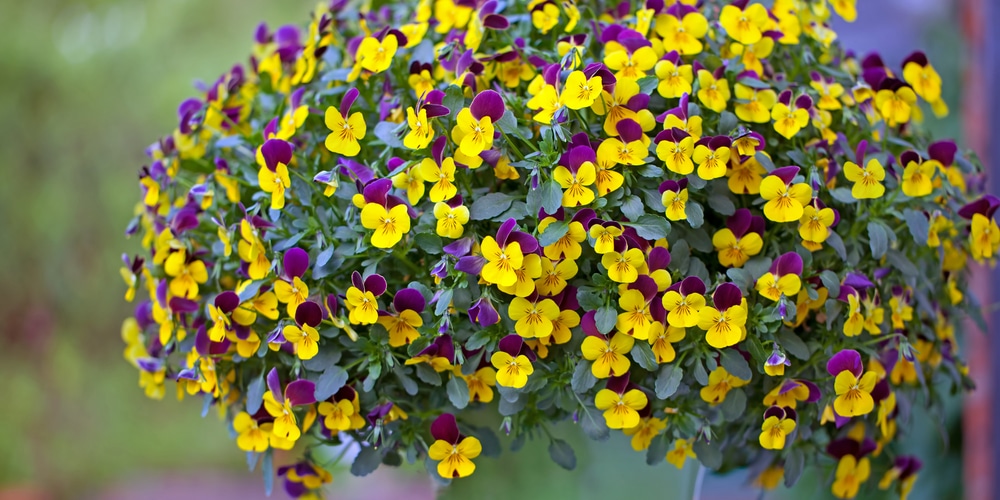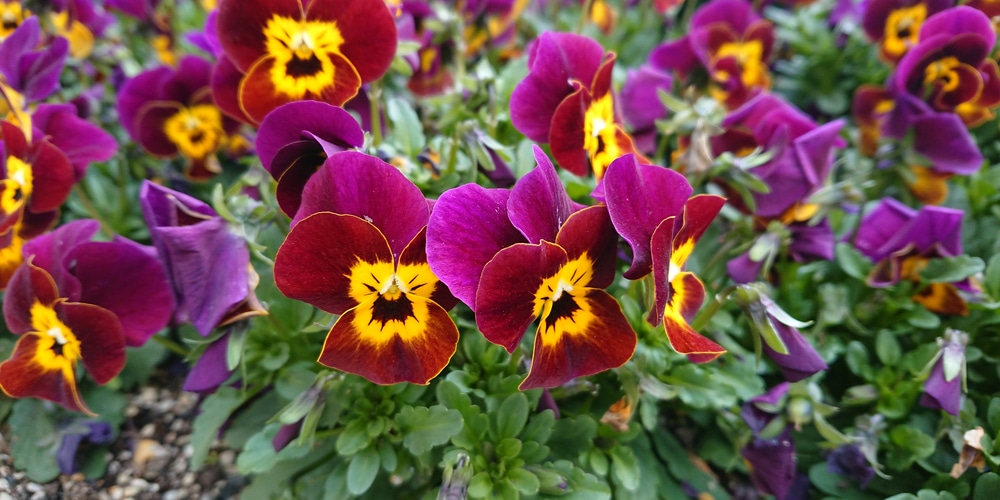Pansies are gorgeous flowers that can make any garden look more lively. You can find them in different varieties ( you can choose among more than 500 species!), meaning you might not have issues finding one that suits your needs and requirements.
Despite not being particularly challenging to grow, pansies prefer low temperatures. You might have noticed them in nurseries in early spring or fall. But in conditions where temperatures rise above 70°F in the summer, these plants might suffer. Still, that doesn’t mean you have to abandon your dreams of growing pansies in your garden.
However, knowing about pansies’ heat tolerance will help you make the most out of these stunning flowering plants. You have landed in the right place to learn more about protecting your flowers from the heat.
How Much Sunlight Can Pansies Withstand?
Pansies will withstand different heat levels depending on the variety you choose to plant. For instance, some will thrive under the full sun, while others tend to do best in the shade.
Don’t forget that their heat tolerance also depends on where you live. However, overall, pansies will thrive in USDA hardiness zones from 4 to 8. Of course, you can find species doing well in colder or hotter conditions.
Those living in a hot region might have better luck growing pansies in early spring or fall when your plants might withstand as many as six hours of direct sun per day.
However, during the summer, they’ll do better in partial shade. Indeed, too much heat can harm them.
So, overall, pansies’ heat tolerance is low. High temperatures might make your plants weak and leggy. Additionally, they might stop flower production. But don’t worry!
With suitable protection and measures, you might be able to grow pansies even during the summer. Jump to the following sections to explore more about how to do so.
How Can You Protect Your Pansies from the Heat?
The first step you should take to protect your pansies from the hot temperatures is to move them to partial shade (if they aren’t in a shady location yet).
Ideally, they should get morning sun but stay protected during the rest of the day. Providing your pansies with adequate amounts of water might reduce the effects resulting from heat damage.
Furthermore, planting your plants around taller plants (or artificial shade) will also reduce damage from hot temperatures. Ideal companion plants include tulips and daffodils.
Don’t forget to apply some fertilizer around your plants to keep the nutrient content in the soil to an optimal level. Of course, you should not overdo it: it will do more harm than good.
Also, despite sounding trivial, deadheading your pansies will contribute to reducing heat damage. Eliminating spend blooms will encourage new growth and strengthen your plants. Keep an eye on them daily to avoid any issues and keep your plants healthy.
How To Select Healthy Pansies For Your Garden
When shopping for pansies, the objective should be to get compact plants with deep green leave. Check with the plants’ roots before purchasing them: they should look white and have healthy-looking roots.
Plus, your pansies should not be leggy: such specimens might experience issues establishing themselves in a different environment.
If you live in a hot region, keep an eye out for pansies growing in 3 to 4 inches wide pots. Such plants have larger-sized root systems, meaning they will take off fast after planting. Plus, they will also resist high temperatures better.
Of course, you can also start pansies from seed. However, it will take about 10 to 12 weeks, meaning you might not be able to enjoy their beauty as much as when planting an older specimen.
Bring your pansies to the ground early: ideally, you should plant them during the fall, at least six weeks before the last frost date.
Related Article: Can I Plant Pansies in the Fall?


